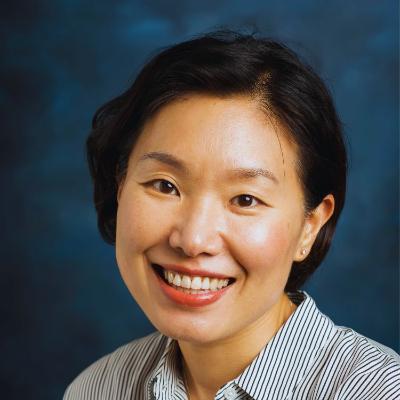
When Jongyeon Joy Ee, Ph.D., arrived in the United States from South Korea 15 years ago to pursue her master’s and doctorate in education, she described herself as an international student. But as she began delving into issues around Korean-English immersion programs, Ee began to see herself differently.
“I now identify myself as a transnational scholar,” says Ee, associate professor and academic director of bilingual education programs at the Loyola Marymount University School of Education. “My Korean name is Jongyeon, my adopted American name is Joy, and both are meaningful and precious to me. I have two home countries, as well as a diaspora community. These serve as a bridge to understanding the struggles of not just Korean families, but other immigrant communities, as well as the assets that can be leveraged to support the education of their children.”

In a globalized world, Ee notes, calling someone an immigrant doesn’t always tell the whole story. “Although I migrated to the United States, I have family and friends in Korea and go back and forth between the two countries,” she says. “I also go to the Korean diaspora communities — whether it’s for groceries or the wealth of knowledge and resources I can tap in to. And it’s the same for other immigrant populations.”
In her research, Ee focuses on ensuring fair and equal access to quality education for all students, regardless of their race, ethnicity, home language, or family immigration status. While immigrant communities enhance U.S. society both economically and culturally, Ee has documented the ways in which the heated debate over immigration policy and the harsher policies and practices of U.S. Immigration and Customs Enforcement (ICE) in recent years have impeded the education of children in these communities.
For their 2022 book Schools Under Siege, Ee and co-editor Patricia Gándara of the UCLA Civil Rights Project analyzed survey data completed by educators across the country and concluded that fear, stress and trauma stemming from the threat of detention and deportation by ICE contributes to increased absenteeism, decreased student achievement, and parent disengagement. “A lot of attention has been paid to the treatment of families crossing the borders, which is important, but we wanted to highlight children who are U.S. citizens attending public schools,” Ee says. “They deserve quality education, and the law gives them that right.”
These burdens are experienced disproportionately in poorly funded districts and Title I schools, and are felt most acutely by immigrant students, English language learners and Latinx students. “Whenever there is a rumor of an upcoming ICE raid, even if nothing happens students will disappear,” says Ee, whose book also highlights the work of teachers, counselors and administrators who are addressing these challenges in support of students and families. “This affects not only these students’ education, but also every other student in the classroom who is left to worry about what happened to their friend.”
Ee’s interest in bilingual education dates to her time as a doctoral student. For her dissertation, she spent six months observing Korean-English dual-language bilingual education (DLBE) classrooms in Los Angeles public schools to learn more about dual-language instruction and the programs’ impact on students and their families. “Before I came to the U.S., I didn’t realize there were so many bilingual education programs, especially in Los Angeles,” she says. “I was also surprised to learn that these Korean-English immersion programs are not just for Korean students. I began talking to non-Korean parents to gain insight into why they enrolled their children in the programs, and then expanded that reflection to young immigrant kids to learn about their identity and the role of schools in supporting those students.”
Dual-language bilingual education programs should be for all students, regardless of whether they come from immigrant households, Ee says. “Especially in affluent communities, these programs are often seen as being about fostering academic achievement and bolstering the student’s résumé for college, but it’s not just about the language,” Ee notes. “It’s how students perceive the world, and developing their appreciation for the assets that people from different communities and cultural backgrounds bring.” In a study published in the journal Teachers College Record earlier this year, Ee documented the crucial nature of parental feedback in ensuring the efficacy and equity of such programs. “The voices of parents, particularly those who don’t speak English and are from low-income backgrounds, need to help shape these programs,” she says.
In 1998, California voters passed Proposition 227, severely curtailing bilingual education in the state’s public schools. But in recent years, Ee says, there has been a rise in support for dual-language immersion education as the benefits of such programs have become more widely appreciated. In 2016, the state’s voters overwhelmingly approved Proposition 58, reversing the bilingual education restrictions. Now, Ee notes, the challenge is to rebuild the bilingual teacher pipeline. “Because bilingualism and biliteracy had been devalued, we have a shortage of qualified individuals in this field,” Ee says. “LMU, with its strong partnerships in communities and with public, charter, and Catholic schools, now has a wonderful opportunity to support and train the next generation of bilingual education teachers—teachers who will spread the value of the transnational assets and resources our immigrant populations have brought to the U.S. for centuries.”